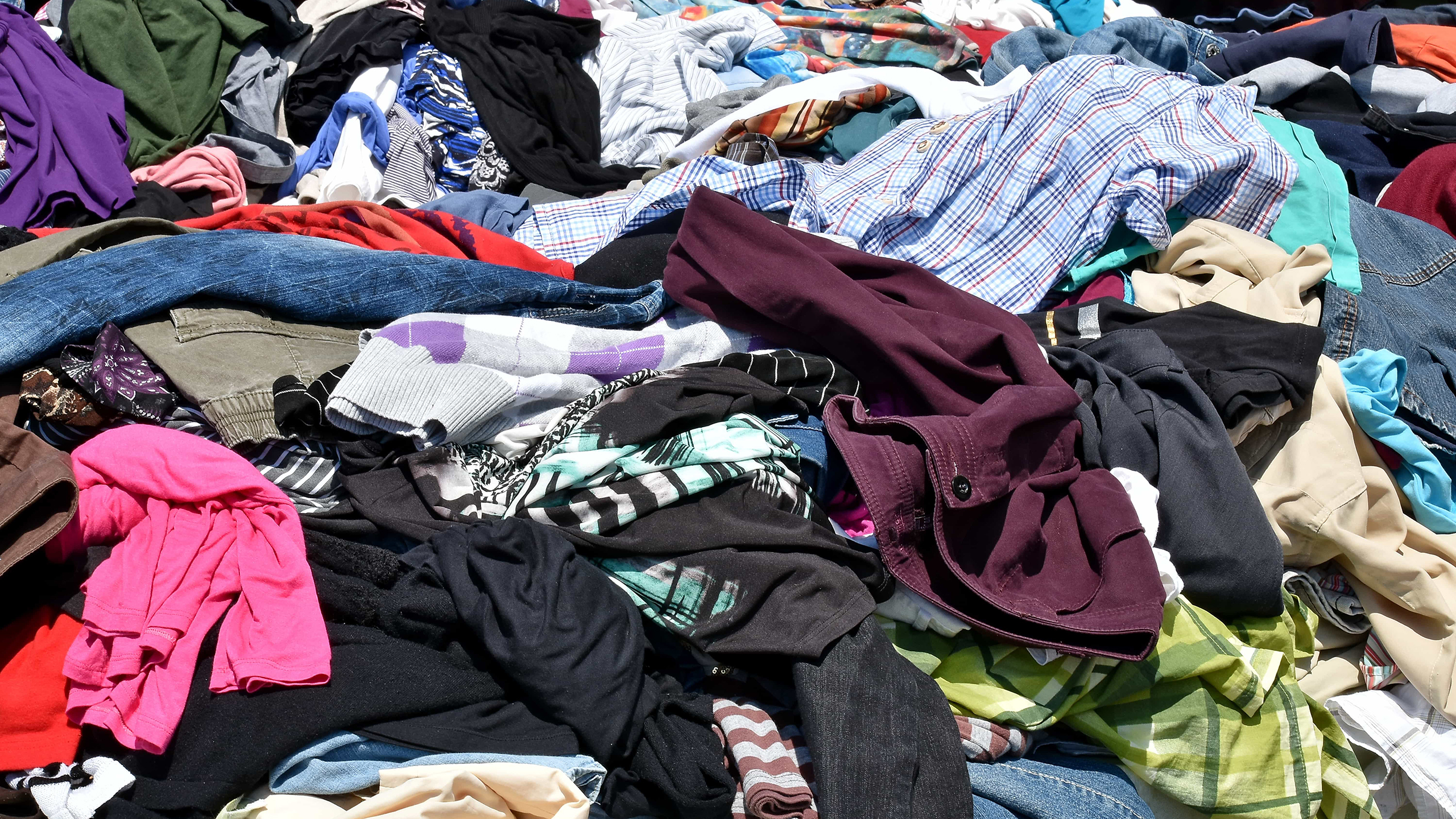
Mechanical Recycling
Recapturing fibres mechanically does not change the basic structure of the existing fabric. For 100% cotton and wool textiles, this means shredding them back into raw fibre that can then be spun and woven again. This process has existed since the 19th century, when ragpickers started to scour the streets of major cities to collect scraps of cloth, even roadkill, which could be used to make clothes. Today, textile mills such as The Billie System in China, mechanically recycle unwanted fabrics on an industrial scale.
Like recycled cotton, most recycled polyester today is obtained through mechanical recycling, however for polyester this involves melting down existing plastic and re-spinning it into fibres. While pre-consumer waste like cutting scraps make up the bulk of input materials for recycled cotton, recycled polyester is most commonly made from PET bottles, post-consumer and industrial waste. Repreve by Unifi is the leading choice of recycled polyester fibre for many of the world’s biggest brands and manufacturers, including Adidas, IKEA, Ford, H&M and Patagonia.
Mechanical recycling requires significantly less energy than producing textiles from scratch, however the process does shorten the fibres, reducing the strength and quality compared to virgin materials. For this reason, mechanically recycled textiles are frequently downcycled into materials such as insulation, wipes and stuffing, or mixed with virgin fibres to create higher quality textiles. Further limitations include the inability to separate blended fabrics, dyes and contaminants – but these issues can be remedied via chemical recycling.
Chemical Fibre Separation
Getting down to the molecular level, chemical recycling technologies extract polymers (the building blocks of fibres) and reprocesses them into virgin quality raw materials. Worn Again Technologies in the UK, and the 2018 H&M Foundation Global Change Award winner The Regenerator as well as Mistra Future Fashion’s Blend Re:wind, both from Sweden, have found ways to isolate cellulose and polyester polymers from polycotton materials. Companies including Re:newcell (Sweden), Infinited Fiber (Finland) and Evrnu (USA) – whose NuCycl fibre was used in the Infinite Hoodie by Stella McCartnery x Adidas – focus on recapturing cellulosic fibres from cotton and viscose.
Chemical textile recycling is still very much in its infancy and currently costs more than mechanical recycling – however since the technology promises to infinitely create new fibres from old materials, this suggests that one day there will be no need for virgin fibres. In the meantime, purveyors of this technology must ensure that any process chemicals are continuously used within a closed loop system, without releasing any harmful byproducts in order to keep environmental impact to a minimum. Researchers from Aalto University and the Univerity of Helsinki have also shown that it is possible to dissolve cellulose with a non-toxic ionic solvent, as used in their Ioncell technology.
Donation, Collection and Sorting
Exciting though these technologies are, a major hurdle in textile recycling is actually getting hold of textile waste. According to the 2017 A New Textiles Economy report by the Ellen MacArthur Foundation, 87% of material used for clothing production is landfilled or incinerated after use. Of the 13% left, less than 1% is recycled back into new clothing, while the rest is shredded and downcycled into lower value applications.
Germany boasts the highest collection rate of used textiles at 75%, however much of this is exported to low wage countries, where they ultimately end up in landfill. At present, no clothing-to-clothing recycling exists at scale and the sorting process is done manually, which is not only incredibly labour-intensive but the difficulties in identifying certain fabrics often result in inadequate sorting. Automatic sorting technologies will therefore be key to unlocking the value of post-consumer textiles.
Responding to this need, there are three European pilot projects: the Fibersort (Holland), SIPTex (Sweden) and Resyntex (Germany), that are currently exploring the use of near-infrared and visual spectroscopy in recognising and sorting large volumes of mixed textile waste according to fibre type and colour.
Next Steps
The end goal is to stop producing virgin fibres all together, divert material from landfill and eliminate waste. Once in landfill, synthetic textiles do not decompose and can release toxins into groundwater and surrounding soil, while natural fibres, although biodegradable, can still take hundreds of years to decompose and may give off harmful greenhouse gases. What’s more, disposal is expensive – the landfilling of clothing and home textiles in the UK for instance is estimated to cost £82m each year.
Recycled fibres must continue to improve, both in terms of quality and production costs, so that they can compete with virgin resources. Ideally there should be more incentives to recycle and buy recycled materials, for producers and consumers alike. Brands and manufacturers need to ensure products are suitable for recycling from the design stage, which for now could include measures such as only using recycled fabrics and mono-materials (blended fabrics are more likely to end up in landfill while chemical recycling is not yet commercially viable); making sure that the sewing thread is of the same fibre composition as the rest of the garment; forgoing dyes, finishes and prints that carry toxic chemicals; and cutting down on hard-to-recycle hardware and trims that would need to be removed manually.
Post-consumer waste will also need to be better managed, therefore educating and encouraging consumers to actively participate in recycling is vital. Consumers could help facilitate the sorting process by removing hardware and trims themselves, and separating their used textiles according to colour and fibre type. Drop off points would need to adapt accordingly, while locally-suitable collection schemes that align with national or international recycling facilities must also be established.
Written by Mairi Hare as part of a collaboration between Sourcebook GmbH and Texpertise Network.
Photo: Bicanski